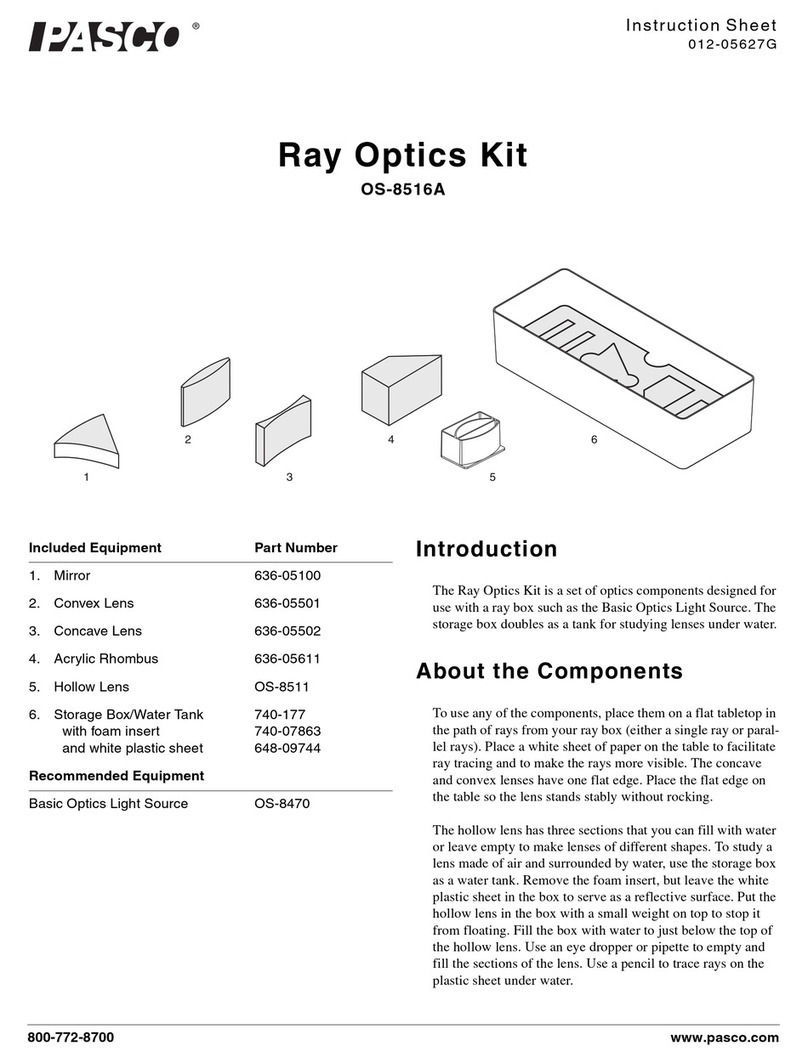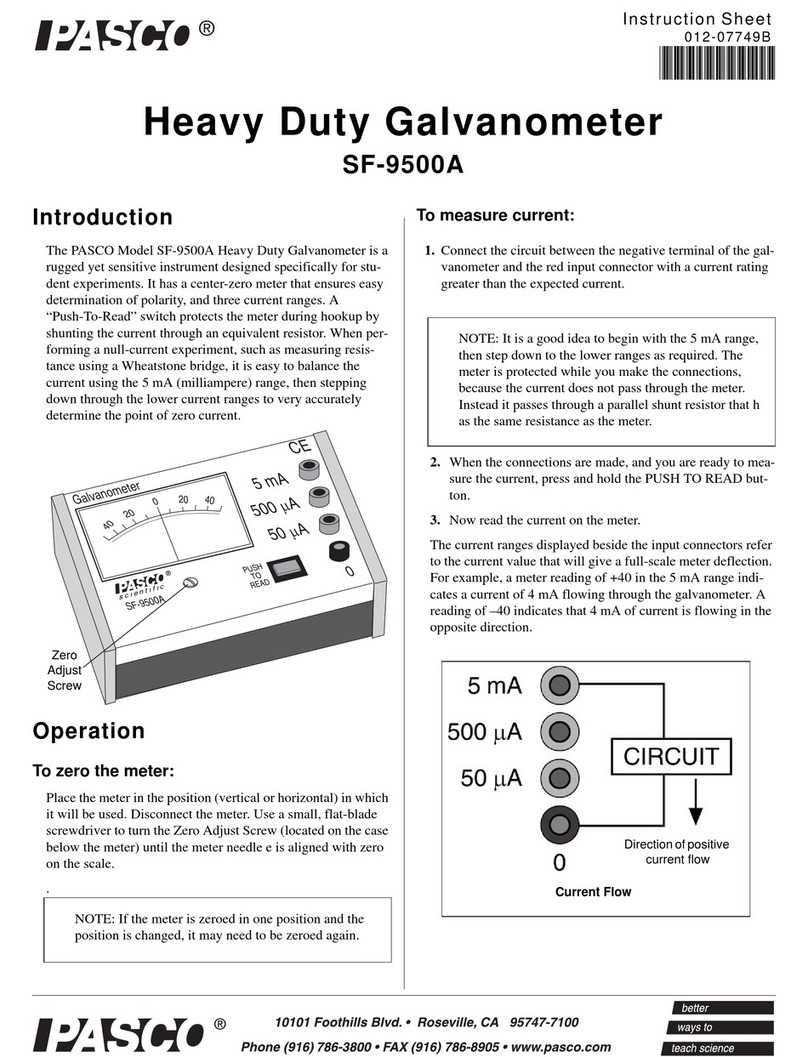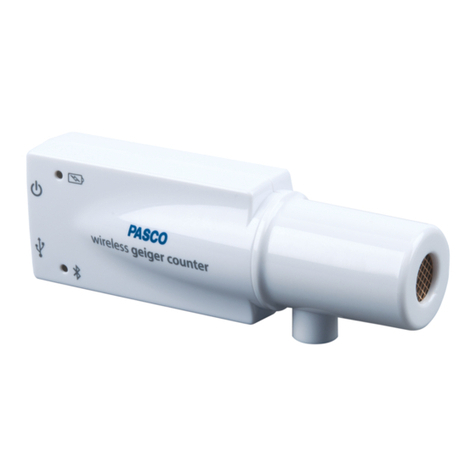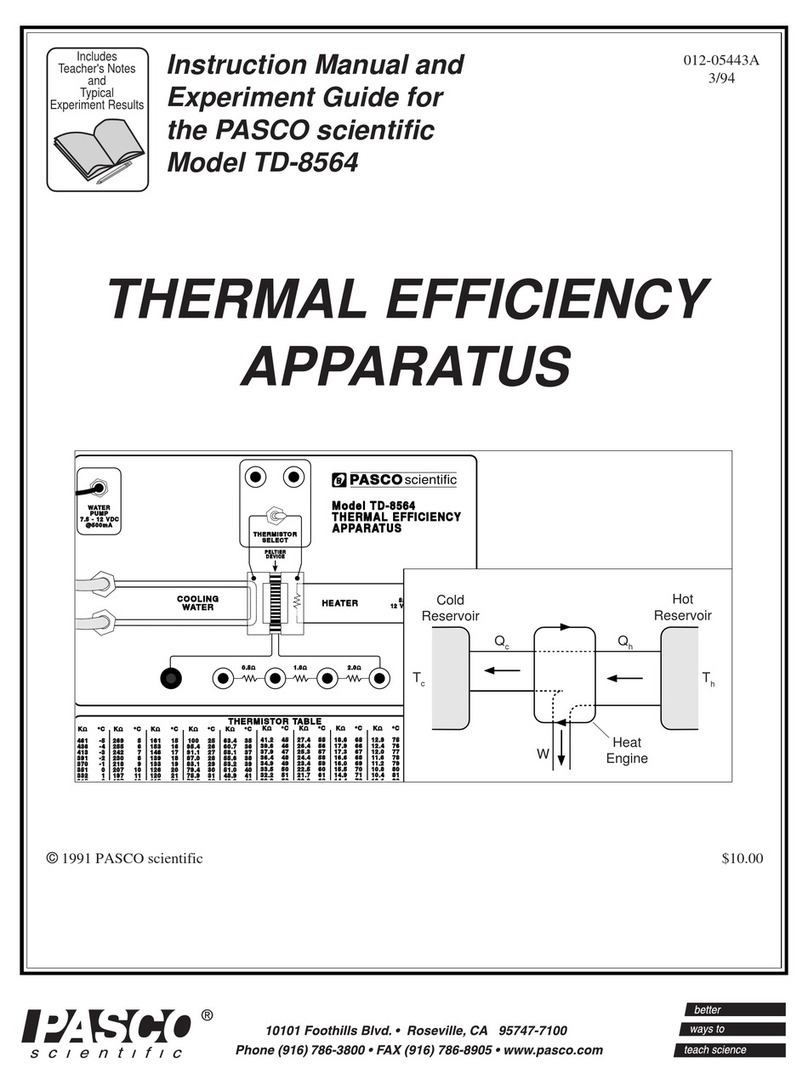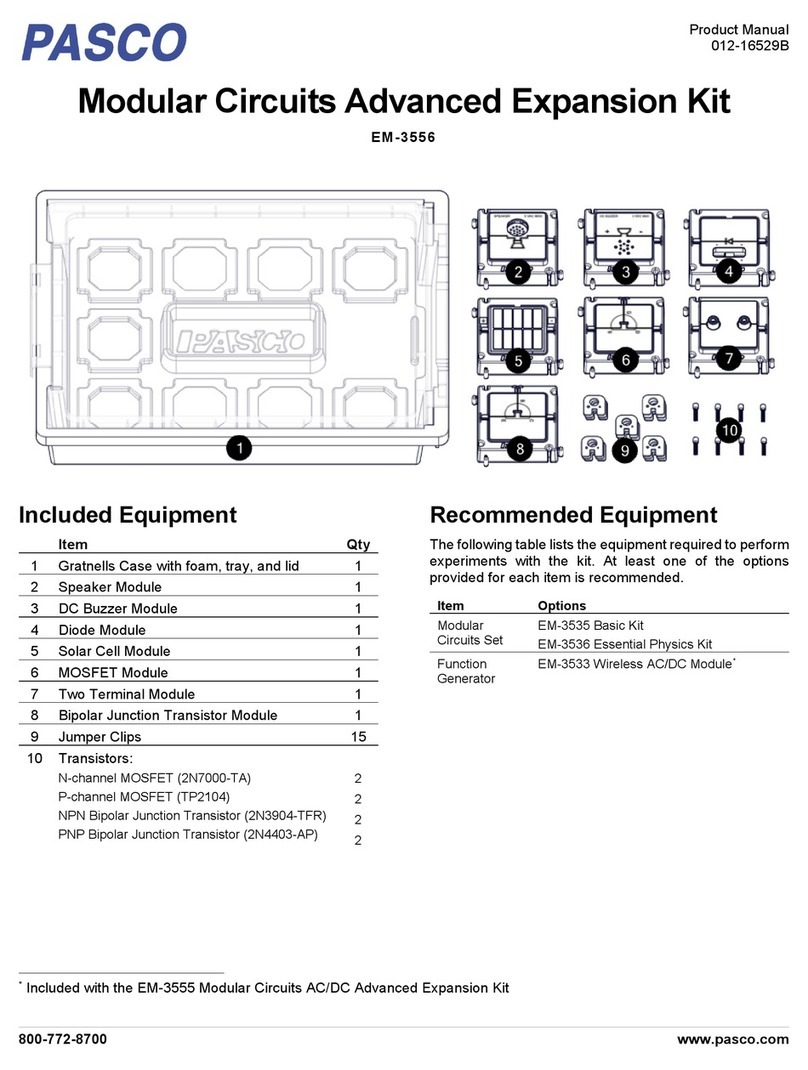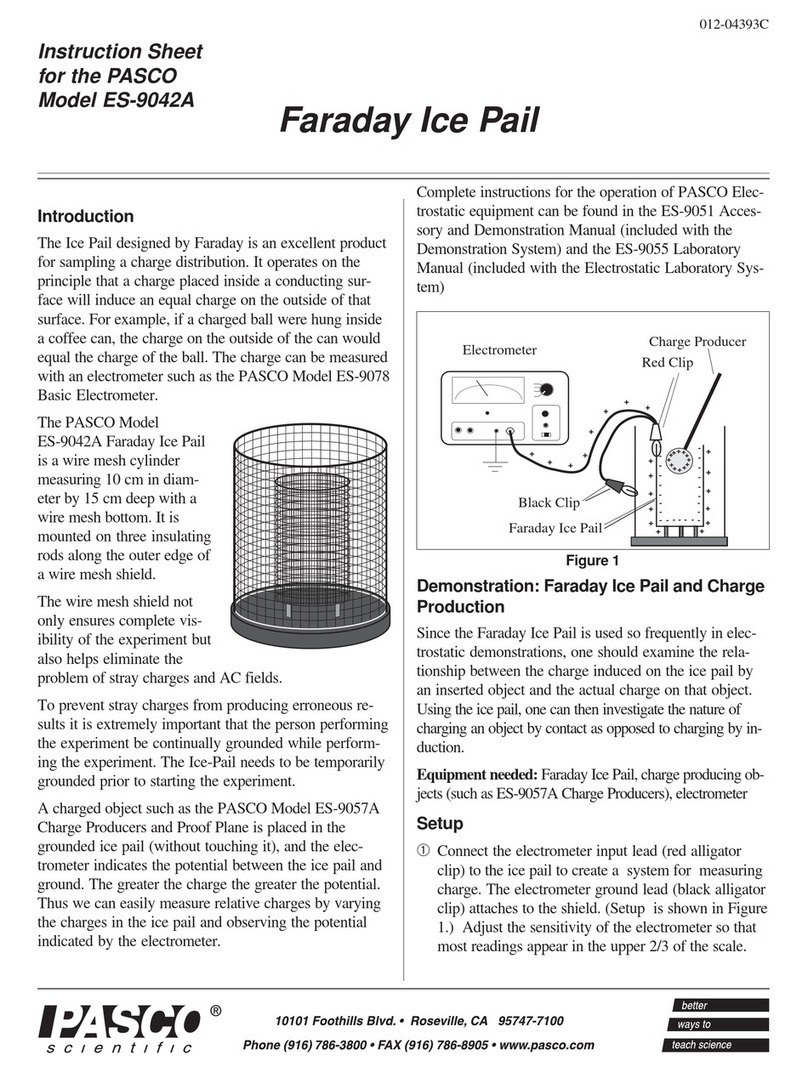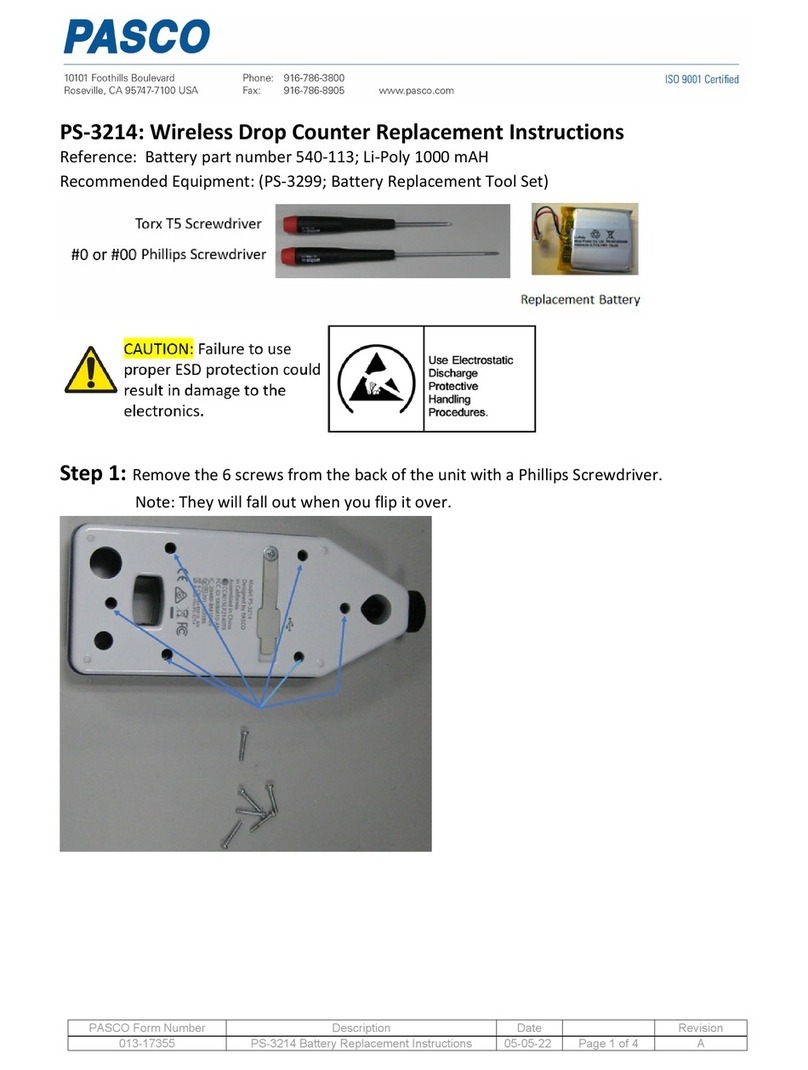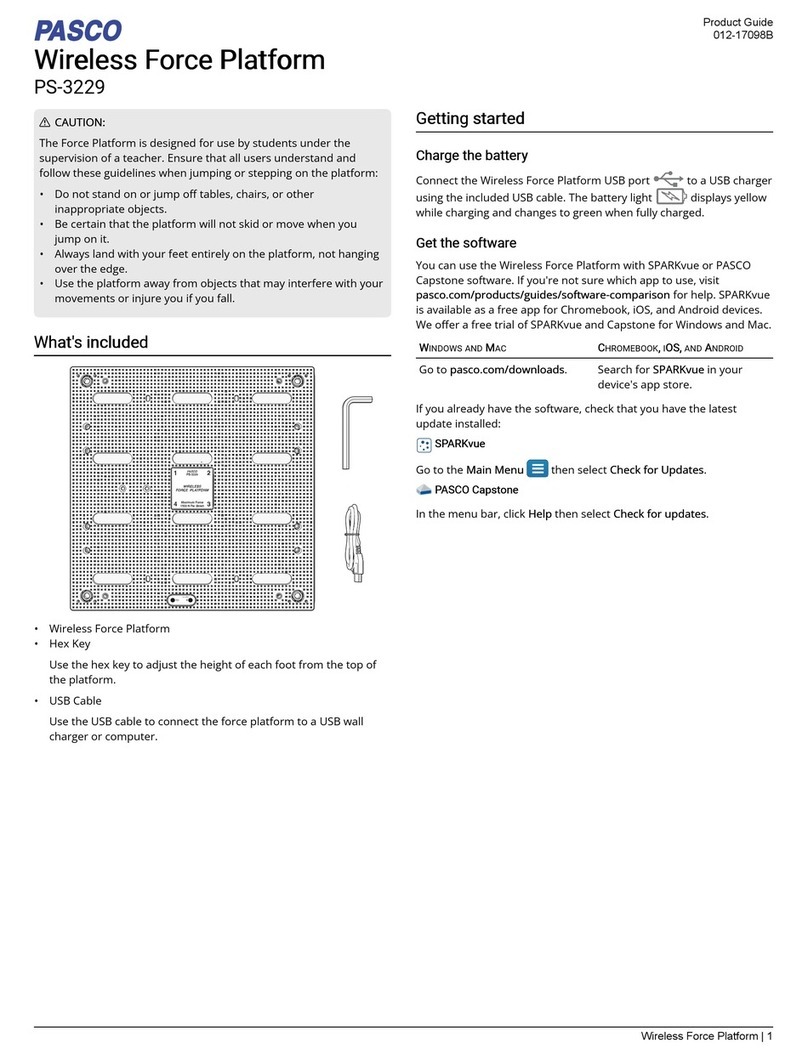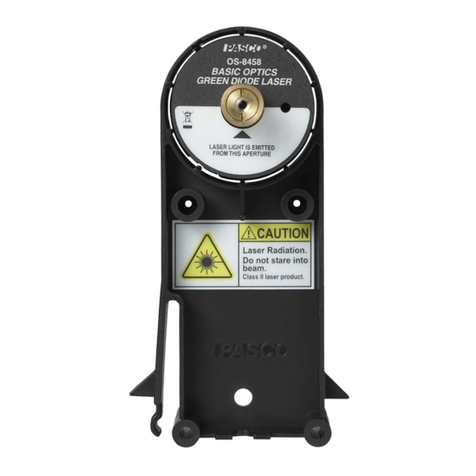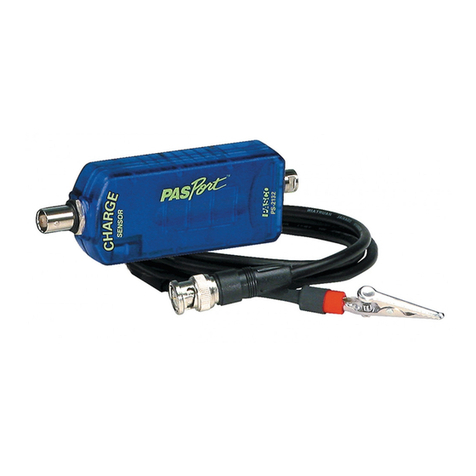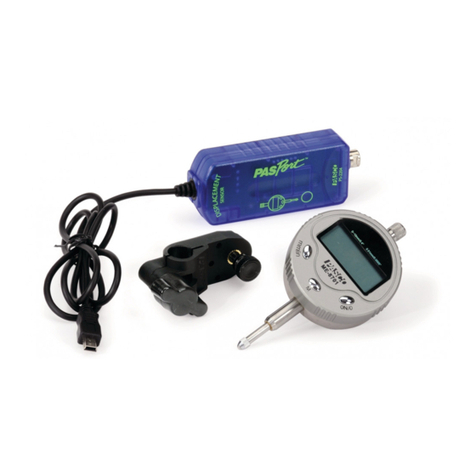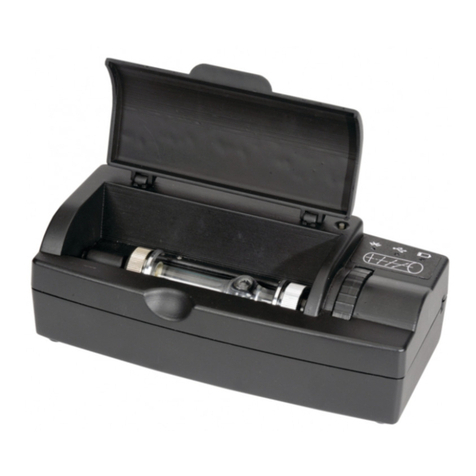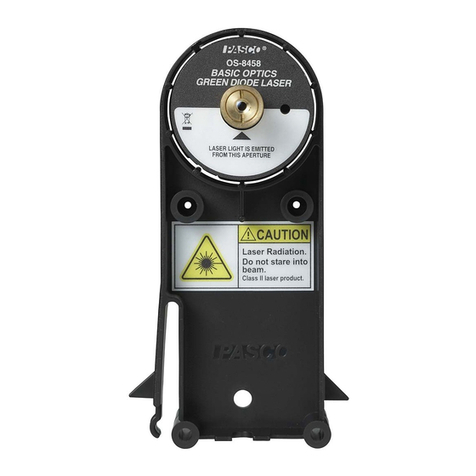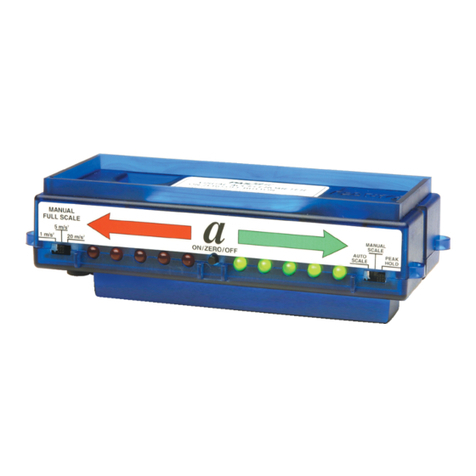
Spirometer Specifications
8
Specifications
The spirometer is an educational instrument. It is not designed, tested, or intended
for medical use.
Technical Support
For assistance with any PASCO product, contact PASCO at:
Limited Warranty
PASCO scientific warrants the product to be free from defects in materials and workmanship for a period of
one year from the date of shipment to the customer. PASCO will repair or replace, at its option, any part of
the product, which is deemed to be defective in material or workmanship. The warranty does not cover
damage to the product caused by abuse or improper use. Determination of whether a product failure is the
result of a manufacturing defect or improper use by the customer shall be made solely by PASCO scientific.
Responsibility for the return of equipment for warranty repair belongs to the customer. Equipment must be
properly packed to prevent damage and shipped postage or freight prepaid. (Damaged caused by improper
packing of the equipment for return shipment will not be covered by the warranty.) Shipping costs for
returning the equipment after repair will be paid by PASCO scientific.
Copyright
The PASCO scientific 012-08856B
Spirometer Instruction Manual
is copyrighted with all rights reserved.
Permission is granted to non-profit educational institutions for reproduction of any part of this manual,
providing the reproductions are used only in their laboratories and classrooms, and are not sold for profit.
Reproduction under any other circumstances, without the written consent of PASCO scientific, is prohibited.
Trademarks
PASCO and PASCO scientific are trademarks or registered trademarks of PASCO scientific, in the United
States and/or in other countries. All other brands, products, or service names are or may be trademarks or
service marks of, and are used to identify, products or services of, their respective owners. For more
information visit www.pasco.com/legal.
Product End of Life Disposal Instructions:
This electronic product is subject to disposal and recycling regulations that vary by country
and region. It is your responsibility to recycle your electronic equipment per your local
environmental laws and regulations to ensure that it will be recycled in a manner that
protects human health and the environment. To find out where you can drop off your waste
equipment for recycling, please contact your local waste recycle/disposal service, or the
place where you purchased the product.
The European Union WEEE (Waste Electronic and Electrical Equipment).symbol (to the right) and on the
product or its packaging indicates that this product must not be disposed of in a standard waste container.
Total Flow 5% accuracy when used as described above
Default Sampling Rate 50 Hz
Flexible Air Lines 90 cm
Address: PASCO scientific
10101 Foothills Blvd.
Roseville, CA 95747-7100
Phone: +1 916 462 8384 (worldwide)
800-772-8700 (U.S)
Web: www.pasco.com
Portions of this manual were reviewed by
A. Greenwell and T. Kjos, Sacramento City
College, Biology Department, Sacramento
California USA..

